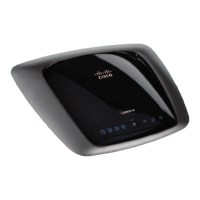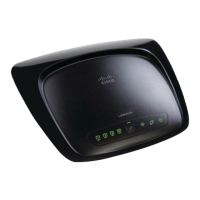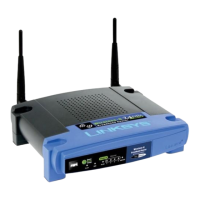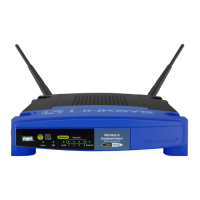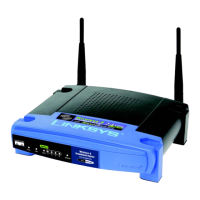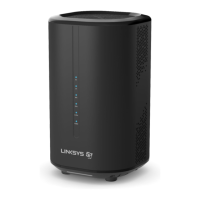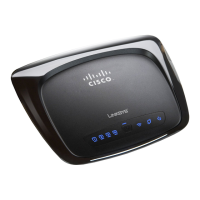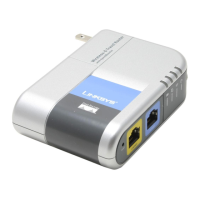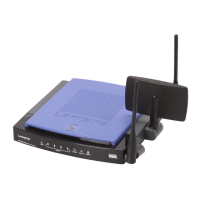
Do you have a question about the Linksys Wireless-N Broadband Router WRT300N and is the answer not in the manual?
| Model | WRT300N |
|---|---|
| Wireless Standard | 802.11n |
| Frequency Band | 2.4 GHz |
| Maximum Wireless Speed | 300 Mbps |
| Wireless Data Rates | up to 300 Mbps |
| Antennas | 2 |
| Standards | IEEE 802.11g, IEEE 802.11b |
| Ports | 4 x 10/100 Ethernet |
| Security | WPA2, WPA, WEP |
Introduction to the router and its benefits, outlining its capabilities and advantages.
Overview of the document's structure, chapter contents, and appendices.
Defines WLAN, LAN, and SSID, explaining network structure concepts.
Compares ad-hoc and infrastructure modes, guiding selection based on network needs.
Details device placement and expansion options for the network.
Identifies and explains router ports (Internet, Ethernet) and the Reset button.
Explains the function of LEDs on the router's front panel.
Step-by-step guide for physically connecting the modem, PCs, and power.
Introduces the web-based utility and main configuration tabs.
Provides status information for the router, local network, and wireless network.
Instructions on accessing the router's configuration interface via a browser.
Configures Internet connection types (DHCP, Static IP, PPPoE) and network settings.
Configures Dynamic Domain Name System for dynamic IP addresses.
Clones the PC's MAC address for ISP registration purposes.
Configures dynamic and static routing settings, including NAT.
Configures essential wireless settings like Network Mode, SSID, and Radio Band.
Sets up wireless network security modes such as WEP, PSK, and PSK2.
Filters wireless access by specifying allowed or blocked MAC addresses.
Adjusts advanced wireless features like AP Isolation and transmission rates.
Configures firewall protection and various Internet data filters.
Allows VPN protocols (IPSec, L2TP, PPTP) to pass through the router.
Manages internet access by blocking or allowing usage based on policy.
Customizes port services for common applications and specific servers.
Sets up public services and specialized Internet applications via port ranges.
Monitors outgoing data for specific port numbers for application support.
Exposes a single local user to the Internet for special-purpose services.
Prioritizes network traffic for demanding applications and devices.
Changes router access settings, configures UPnP, and manages configuration files.
Provides logs of incoming/outgoing traffic and access activity.
Checks network connectivity using Ping and Traceroute tests.
Restores the router's configuration settings to their original factory defaults.
Instructions for upgrading the router's firmware with the latest version.
Displays detailed information about the router and its current settings.
Provides information regarding the local network configuration and connected devices.
Displays the current status and configuration of the wireless network.
Provides solutions for common installation and operation issues with the router.
Answers common questions regarding router features, usage, and connectivity.
Lists essential security measures to implement for wireless network protection.
Explains common wireless network vulnerabilities and methods to mitigate them.
Steps to find MAC/IP addresses on Windows 98SE and Me operating systems.
Steps to find MAC/IP addresses on Windows 2000 and XP operating systems.



